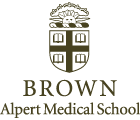The Weight of Pain: What does a 10 on the Pain Scale Mean? An Innovative Use of Art in Medical Education to Enhance Pain Management.
Bonnie Marr, MD Emergency Medicine resident
In collaboration with the RISD Museum, this project will use museum objects as a means to improve the way physicians understand and respond to patients in pain. By focusing on metacognition skills like observation, deduction and speculation, the museum will serve as a neutral platform for discussing this complicated and essential issue. The goals of this educational experience includes building awareness into how one recognizes and validates the pain of another. This process is critical for the successful treatment of pain, which is complicated by two epidemics--meeting the challenge of oligoanalgesia (the undertreatment of pain) at a time of record opioid abuse. The desired result of the session is for participants to reflect on their own practice patterns and biases, to discuss mechanisms for improvement, to remove barriers to responsible pain management. Initial sessions will focus on physicians, with the hope that the experience can be adapted and expanded for Emergency Department staff and medical students.
(This project is supported by a 2012-2013 UEMF Resident Education and Service Grant)
Related Article
Think Different
by Kris Cambra
Brown Medicine, Winter 2011
An integrated humanities curriculum teaches medical students new ways of seeing.
"I always felt that the most important part of my medical education was the year I took off to write," says Assistant Professor of Emergency Medicine Jay Baruch.
Making model doctors
By Felice J. Freyer Journal Medical Writer
Providence Journal
Brown University medical students get a dose of humanities to help them grasp the ambiguity that real-life care will present

